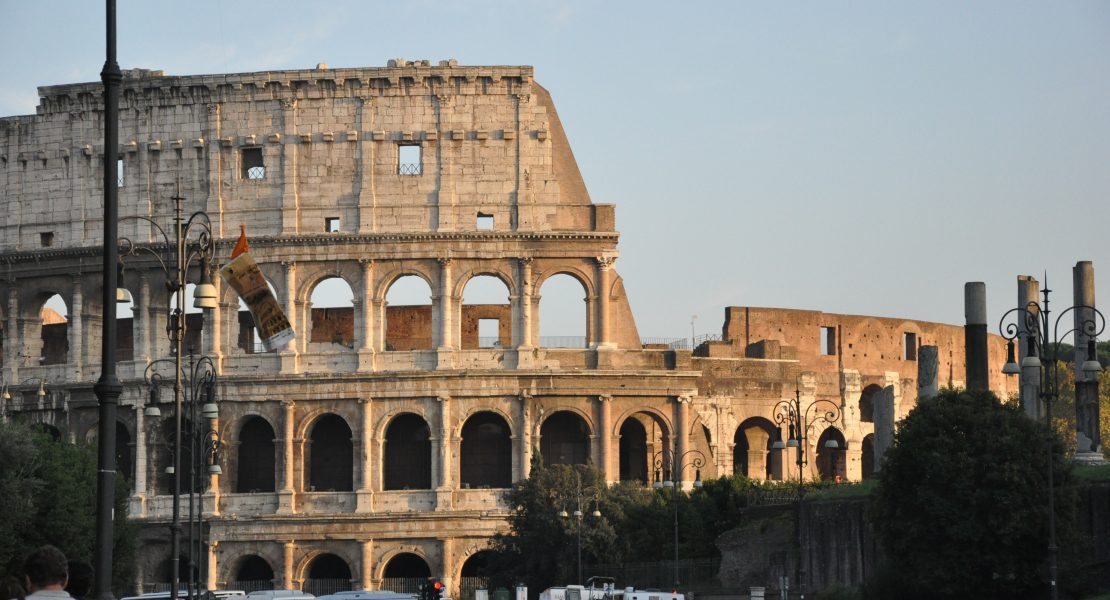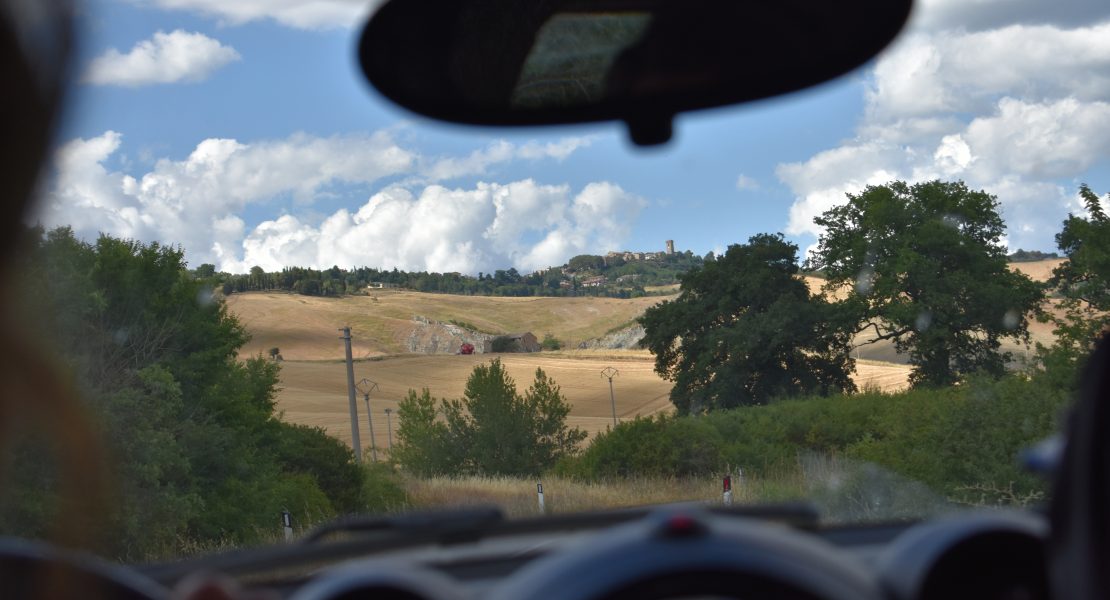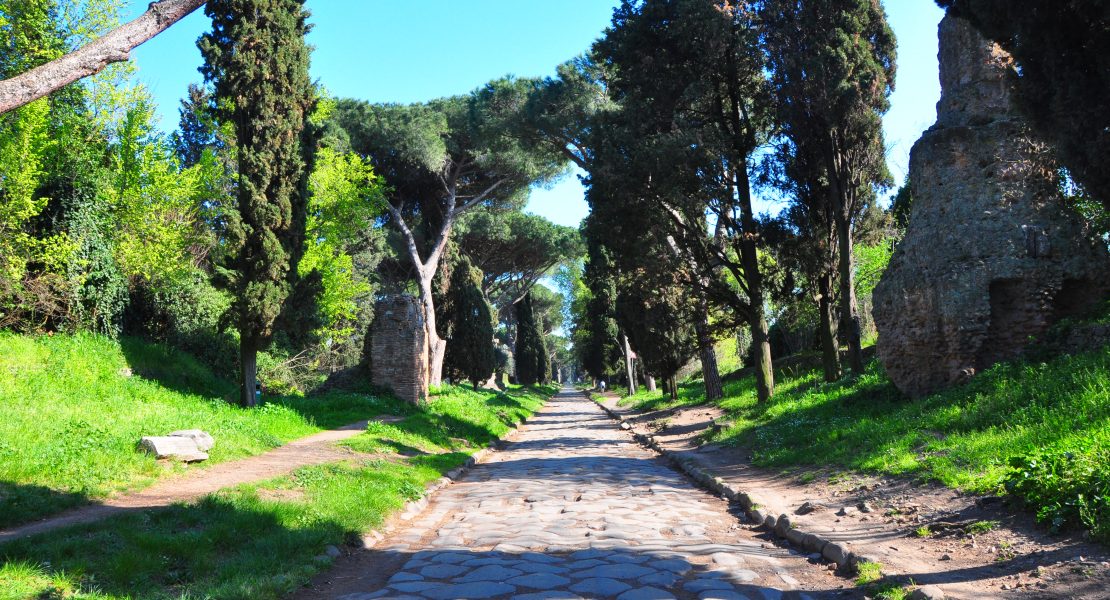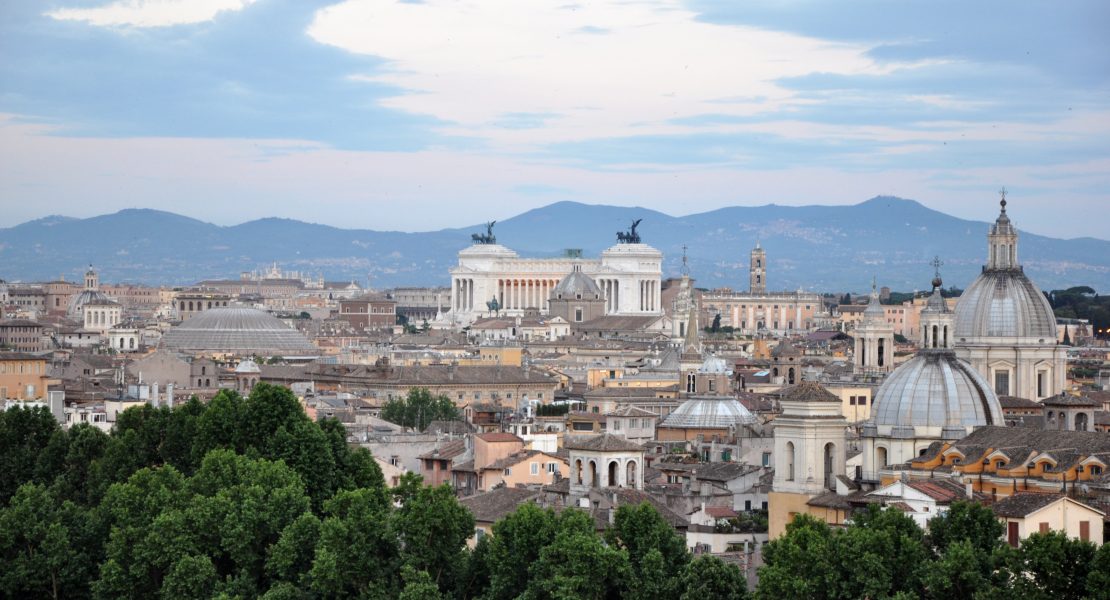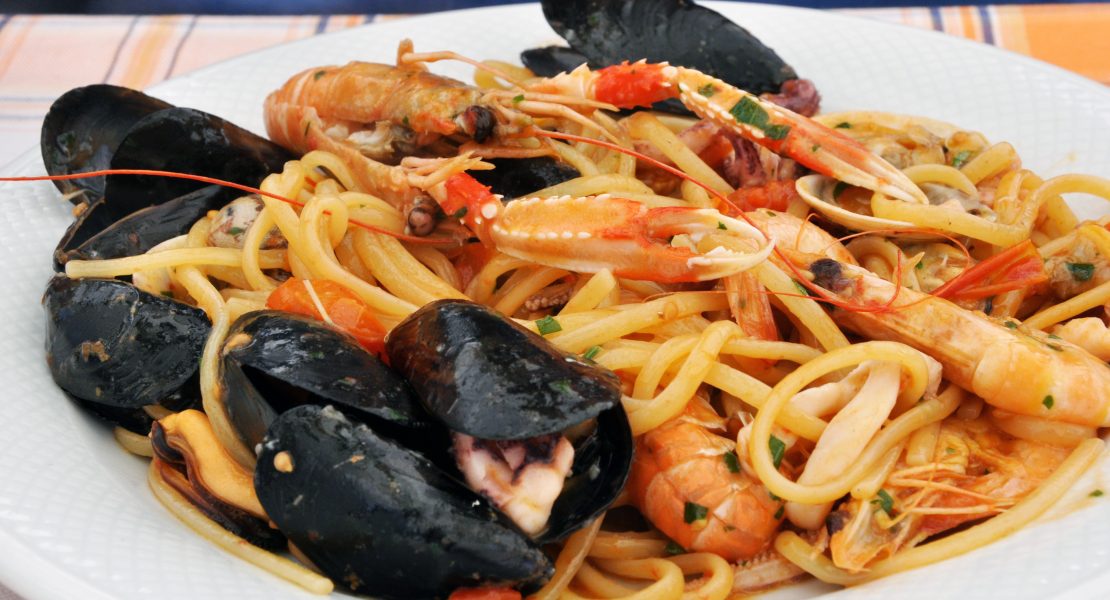I write frequently about Italy, travel, food, skiing, and more for publications including the Globe & Mail, BBC, New York Times, New York Magazine and National Geographic Traveler. A complete list of my most recent stories can be found here.
La Campana: A Classic, and Rome’s Oldest Restaurant
 La Campana, a restaurant tucked away a few steps from Piazza Navona, claims to be Rome's oldest dining establishment. It was recorded as being on the same street all the way back in 1518 — a tough claim to match.
La Campana, a restaurant tucked away a few steps from Piazza Navona, claims to be Rome's oldest dining establishment. It was recorded as being on the same street all the way back in 1518 — a tough claim to match.
But since these kinds of claims are everywhere, particularly in a city as overrun with old establishments as Rome, that's not really why you should go.
 You should go if you want to experience good, classic Roman food, or cucina romana, at not-bad prices, in the heart of the center. In an area where culinary mediocrity is so thick on the ground, that's pretty tough to find. Oddly enough for the neighborhood, it's not even fair to call La Campana touristy: While there are always tourists there, a number of businessmen are always taking up the tables as well, particularly at lunch.
You should go if you want to experience good, classic Roman food, or cucina romana, at not-bad prices, in the heart of the center. In an area where culinary mediocrity is so thick on the ground, that's pretty tough to find. Oddly enough for the neighborhood, it's not even fair to call La Campana touristy: While there are always tourists there, a number of businessmen are always taking up the tables as well, particularly at lunch.
That said, not all of my experiences at La Campana have been perfect. One more-mediocre experience included my rigatoni all'amatriciana (€8), a dish that was undone by the long strips of not-very-crisp-or-smoky guanciale, or pork jowl, each of which were at least two-thirds white fat.
But I've also had a juicy saltimbocca (veal wrapped with prosciutto, €12, shown below) and an excellent coda alla vaccinara (€12), at top, in a rich, delicious sauce and with the meat falling off the bone. That coda alla vaccinara, alone, made me vow to pay more visits to Rome's (maybe) oldest restaurant. Other classic dishes on the menu to try include the fettucini al ragu (€10), trippa (€12), and artichoke (€5).
 Something else I'll say for La Campana: The service is excellent. That's not something you tend to see in many moderately-priced Roman restaurants, particularly not those that have been written up as often as this one. But the black-vested waiters are unfailingly polite, and the service (usually) pretty fast.
Something else I'll say for La Campana: The service is excellent. That's not something you tend to see in many moderately-priced Roman restaurants, particularly not those that have been written up as often as this one. But the black-vested waiters are unfailingly polite, and the service (usually) pretty fast.
La Campana. Vicolo della Campana 18. Closed Mondays. For more information, click here. For a map, click here.
You might also like:
The Demise of a Once-Good Restaurant in Rome: Taverna dei Fori Imperiali
Pompeii: Death Throes, and Cautionary Tales
 I'll write more about taking a day trip from Rome to Pompeii soon, but for now, I just wanted to post this link to my story for The American on the ash-frozen city.
I'll write more about taking a day trip from Rome to Pompeii soon, but for now, I just wanted to post this link to my story for The American on the ash-frozen city.
In short: While it's incredible to see such perfectly-preserved frescoes, buildings and graffiti, there's something more than disturbing about it all.
China’s Terracotta Warriors Invade Rome
 It's not every day that you see China's ancient, famous terracotta warriors from Xi'an in the also-ancient, also-famous Roman forum.
It's not every day that you see China's ancient, famous terracotta warriors from Xi'an in the also-ancient, also-famous Roman forum.
Now you can.
From now until January 9, 2011, Rome is hosting the exhibit "The Two Empires: the Eagle and the Dragon." Held in the Curia, or the ancient senate house in Rome's forum, the exhibit is the first to explicitly compare China's empire with Rome's.
But it's just a taste of what else Italy (and China) have planned.
The parallels between the countries' histories are certainly there. Both were extraordinarily sophisticated, militaristic empires. Both unified dozens of warring territories under the same political and economic systems. And both influenced all of history; just as modern-day Europe and the United States owe a great debt to the ancient Romans, so, too, do the modern-day Chinese owe the Qin and Han dynasties. (Those dynasties ruled China from the 3rd century B.C. to the 4th century A.D., a timeline that, too, parallels the height of the Roman empire).
And the artifacts that Rome's gotten ahold of for the exhibit are pretty fantastic. Most striking are, of course, the terracotta warriors, here on one of their rare trips away from Xi'an, China. More than 8,000 of them, each one different and detailed, were sculpted around 210 B.C. for Emperor Qinshihuang's tomb. Eight (plus a horse) are now in the Curia (pictured above). Seeing them in the same space as first-century Roman marble statues is striking — no less because of how much the two cultures shared in terms of their sophistication and technical skill alone.
 While neat, the exhibit is far from thorough. It's just a teaser. And that's the whole idea. It's a preview of a bigger exhibit coming to Palazzo Venezia in November, which will boast 450 different Italian and Chinese pieces.
While neat, the exhibit is far from thorough. It's just a teaser. And that's the whole idea. It's a preview of a bigger exhibit coming to Palazzo Venezia in November, which will boast 450 different Italian and Chinese pieces.
It also launches a long-term collaboration and cultural exchange with China, kicked off by Chinese Prime Minister Wen Jiabao's visit to Rome on October 7. That collaboration includes the participation of Italy's ministry of culture in China's new National Museum in Beijing, with a wing focused on Italian culture — and a reciprocal space for a state museum of Chinese culture in Palazzo Venezia.
So stay tuned. Update, Nov. 17: See my new blog post on the "Eagle and the Dragon" exhibit for information on the Palazzo Venezia show.
The exhibit at the Curia is open from 8:30am-6:30pm until October 24, from 8:30am-4:30pm afterward. Entrance is included in your forum/Colosseum/Palatine ticket. For more information (in Italian), click here.
Going to the Amalfi Coast? Please, Don’t Buy the Coral

After visiting the Amalfi coast this week, I was struck by the amount of coral jewelry being sold — and the number of tourists buying it. It didn't seem as if anyone else saw signs like that above, proudly proclaiming "Genuine Coral," as a problem. But it is.
Why shouldn't you buy (genuine, unfarmed) coral, whether from the Amalfi coast or elsewhere? Let's count the ways.
1. It's not even from the Mediterranean. Most visitors seem to think that the coral making up those pretty blue, red, and pink necklaces comes from the Bay of Naples. But at least two-thirds of coral jewelry sold on the Amalfi comes, instead, from the Pacific. Why? Because the Mediterranean is already largely depleted of its reefs… thanks to overfishing. And while the Pacific currently has more coral, its resources are quickly running out, as well.
2. Coral is not a rock, or a plant. It's an animal. Coral is alive — at least, before it's fished. It belongs to the same animal group as jellyfish and sea anemones. Each single animal is called a polyp; together, these polyps make up a colony. They excrete calcium carbonate for protection, which makes up their exoskeletons. So what you are wearing around your neck is, literally, the skeleton of these creatures. (Yuck).
3. It's an animal that supports a full 25 percent of other ocean animals. More than 4,000 species of fish alone depend on coral, living in and among its handy nooks and crannies and feeding on the other creatures that live there. Coral reefs make up the world's richest and most diverse type of marine habitat. And they provide the backbone of a whole ecosystem that, without them, can't exist.
Think of coral reefs like a rainforest: If you wouldn't buy the harvested wood of an endangered tree that supported 25 percent of all rainforest animals, don't buy coral.

4. Coral reefs are pretty important to people, too. They naturally protect coastlines from storms, erosion, and tsunamis; they provide millions of people worldwide with the fish that they rely on for meals. An estimated 500 million people worldwide require coral reefs for their livelihoods.
5. To get the coral, many Mediterranean harvesters still use dredging. That's illegal. Dredging, which means dragging nets along the seabed, takes absolutely everything in its path. Once dredged, coral reefs simply don't recover. They're deader than dead. The practice has been banned in the Mediterranean since 1994, but it's still done.
6. All of that important coral is disappearing. Fast. In the Mediterranean, red coral harvests have plummeted by 66 percent from 1985 to 2001. That's not because jewelers have turned to more sustainable practices; it's because hardly any coral is left. Worldwide, one-quarter of reefs are irreparably damaged, while another two-thirds is at serious risk of being lost.
I've scuba-dived in damaged reefs before, and there's no overemphasizing just how big the difference is between a dead reef — white, abandoned, without a single living thing — and a live reef, teeming with colorful fish and plant life. It's heartbreaking to think that 25 percent of reefs that were healthy just several decades ago have now slipped into the former category.
7. Once it's gone, coral ain't coming back, at least anytime soon. It takes a coral reef an entire year to grow from 1 to 3 centimeters horizontally and 1 to 25 centimeters vertically. And, of course, that growth can only happen in an area that's being undisturbed by practices like trawling. That means the coral reefs in existence are pretty old; the Great Barrier Reef, for example, started growing 20,000 years ago.
The reasons to think twice before splurging for coral go on and on.
Yes, it's worth keeping in mind, too, that the coral fishers and jewelers in the Amalfi depend on coral for their livelihoods. And it is a practice they've been following for hundreds of years. But before millions of tourists visited the Amalfi coast every year, the demand simply wasn't there for coral on the same level it is now. So the trawling wasn't at the same level, either. Many reefs still thrived. Not today.
So while my heart goes out to those who say they have to harvest coral to put food on the table, it's those workers, too, who might want to invest in more sustainable practices. Because at this rate, they'll all be out of a job in twenty years.
So please: Don't buy the coral. If you're looking for a souvenir from Sorrento or Positano, go for that limoncello instead.
 You can find a better souvenir of your time in Positano. How about a pretty picture instead?
You can find a better souvenir of your time in Positano. How about a pretty picture instead?
For more information and to see what else you can do to help, check out:
Reef Relief, a nonprofit devoted to saving the world's coral reefs
Miss Scuba's article on the different types of coral and how coral harvesting is harmful
The Earthwatch Institute's section on coral reefs
The resources and information at the Coral Reef Alliance
*Photo of coral reef in center of article taken from Wikimedia Commons.
For a Quirky, Quick Art Visit, the Galleria Spada
Unless you're a Mannerist art fan, don't visit the Galleria Spada until you've seen the Vatican museums, Galleria Borghese, Capitoline museums, Villa Farnesina, Palazzo Massimo, and Palazzo Barberini.
But. Once you've done those — or if you're in the mood for just a half-hour art stop, instead of the longer slog the other galleries entail — check out the collection of Palazzo Spada.
Located just around the corner from Campo dei Fiori and Piazza Farnese, in one of Rome's lovely and quieter neighborhoods, the palazzo got its start as a cardinal's palace in the 16th century. Seventy years later, it was built by another cardinal (Cardinal Spada, of course!) who commissioned none other than Borromini to modify it.
Borromini's main contribution? The courtyard's colonnade, a trick of perspective that makes the gallery look 37 meters long, when really it's just 8 (shown above).
The "ah-ha!" you get when you catch just how small the gallery really is (aided by one of the workers, who will come out and stand at the back of it to show you that it's all just a trick) is one that must have been shared by guests to the palazzo for nearly four centuries. But that's not the only way in which you experience the gallery much as 17th-century visitors would have.
In all four (yes, only four) of its rooms, the museum seems frozen in time. The collection — which boasts paintings by Guido Reni, Orazio and Artemisia Gentileschi (Artemisia's "Santa Cecilia" is shown below), and Domenichino, plus one piece thought to be a Titian — is still displayed much as it would have been. The walls are hung with
painting upon painting; the floors are bordered with ancient busts and statues; the ceilings are frescoed. It all feels a bit musty, and you're likely to be the only person there.
Sound good? Then go. After all, it's one of the few things you can do in Rome that almost no other tourist has.
For more information (in Italian), click here. For a map, click here. The Galleria Spada costs €5, with reduced options for E.U. members.
 .
.
For Cucina Romana Done Right: Il Pommidoro
 When I want cucina romana, Rome boasts one restaurant I can always count on for high-quality ingredients and top-notch dishes: Il Pommidoro.
When I want cucina romana, Rome boasts one restaurant I can always count on for high-quality ingredients and top-notch dishes: Il Pommidoro.
Located in the student-heavy, graffiti-spotted San Lorenzo neighborhood (half-jokingly referred to by Roman residents as the “communist quarter”), Il Pommidoro isn’t on the track for most tourists. The clientele, almost always exclusively Italian, reflects that. But when it only costs €6 to take a cab before 10pm to Il Pommidoro from, say, the Colosseum, it’s a worthwhile venture. Especially when it’s for classic Roman dishes the way Il Pommidoro cooks them up.
One of Rome’s classic family-run restaurants, Pommidoro dates back to 1926, when the current owner’s grandmother turned her wine shop into an eatery. Aldo, the grandson, started working here at seven.
Although the menu does have plates inspired from beyond the Lazio region, most of the food reflects those older Rome traditions. All of your classic offal is on the menu, from animelle alla cacciatora, or stewed sweetbreads (€12) to spiedone di pajata, the intestines of unweaned calves (€10). Try the porchetta as an antipasto; the sliced pork, shown below, is melt-in-your-mouth. Roast partridge, rabbit and duck also are on the menu, and much of it was shot by the Bravi family themselves on their hunts. (This was, perhaps, never made more real to me than when I took a bite of their pheasant last night, only to chomp down on something hard. It was shot.)
Pastas include all the classics, too, from carbonara (€8) to amatriciana (€8). And while a recent amatriciana was the only dish I’ve ever had there that I haven’t been completely impressed with — it was a little too watery — Il Pommidoro has made it up to me in the past with their other pastas. Most notable: The best pasta alla gricia I’ve ever tasted, complete with perfectly al dente pasta and smoky, just-crunchy-enough bits of guanciale, shown at top.
Always ask about their specials, too; you might come across something like the orange mushrooms, or amanita caesarea, shown above.
Il Pommidoro tends to be popular with locals, so make sure you book in advance. Unlike most other Rome restaurants, it has long lunch hours — until 3pm — so it’s a good midday stop, too.

The wood oven at Il Pommidoro, perfect for roasting those suckling pigs and rabbits.
Il Pommidoro. Piazza dei Sanniti 44, in San Lorenzo. Open for lunch and dinner daily except for Sunday. 064452692. For a map, click here.
The Newly Renovated Palazzo Barberini: The Verdict

Palazzo Barberini, home both to the powerful clan that produced Pope Urban VIII and to paintings by greats like Raphael, Caravaggio, Titian and El Greco, hasn’t been a proper museum in years. Plans to create a central space for its collection were stalled for decades; until 2006, the palazzo even served as an administrative office for the Italian military. Paintings were split between various galleries across Rome, and even more of them remained in storerooms, hidden to the public.
That all changed just a couple of weeks ago.
I paid a visit to the newly-restored Palazzo Barberini today, and all I can say is: what a difference a few more rooms make.
(Note: This post was last updated with current information in April 2017).
The piece-de-resistance of the whole collection long has been Pietro da Cortona’s Triumph of Divine Providence (shown above), the fresco on the ceiling of the Grand Salon, mind-boggling for its size, its spot-on execution of trompe l’oeil, and its sheer over-the-top-ness. Under restoration for months, it’s now viewable in all its Baroque glory. A plus: Two comfy, long sofas let you stretch out on your back to take it in without hurting your neck.
But there are other jewels in the collection that are only now being shown off, too. Medieval pieces that had been undisplayed, including 14th-century scenes of crucifixions and sad-eyed Madonnas, now take up several rooms. A hall of landscape paintings includes several sweeping works by Paul Brill. And one room just opened to the public features a rushing fountain, a little piece of indoor theatricality in a time that loved everything unexpected and dramatic in art.
As well as the art itself, the museum experience has improved. A description in English and Italian greets you in each room, giving an overview of how the pieces link together (usually, by period and geography), and the flow of your visit is set up so that you progress from the 14th century all the way up until the 17th. And because there’s more room, the pieces aren’t as crammed in together.
With its new rooms, the Palazzo Barberini should take you about two hours to get through.
The Palazzo Barberini is located just steps from the Barberini metro at Via delle Quattro Fontane, 13. It’s open every day but Monday from 8:30am-7pm, making it an ideal early-evening stop. The entrance price is currently €10. For more on Palazzo Barberini, click here.
Also: a good reason to head “outside the walls,” books about Italy to put on your must-read list and an answer to the question: is Rome really safe?
If you liked this post, you’ll love The Revealed Rome Handbook: Tips and Tricks for Exploring the Eternal City, available for purchase on Amazon or through my site here! I’m also free for one-on-one consulting sessions to help plan your Italy trip.
Cupcake Craving? Indulge Your Sweet(y) Tooth
Every once in a while, a girl (or guy) needs a cupcake. These aren’t easy to come by in the Eternal City, a town more known for devil-fighting than devil’s food. Luckily, there’s Sweety Rome.
A bakery and café located in the heart of Monti, Sweety Rome boasts pastries, muffins — and cupcakes. When I saw a red velvet cupcake (shown above), next to a chocolate cupcake, next to a vanilla-with-lemon icing cupcake, at a bakery in Rome, I almost couldn’t contain myself. (I thank Baked & Wired, the frustratingly-tempting and way-better-than-Georgetown-Cupcake place next to my old office building in Washington, D.C., for my not-quite-forgotten cupcake addition).
But displaying a cupcake is one thing. Actually baking one that’s up to a Baked & Wired-lover’s snuff is something else.
Two trips, three muffins and three cupcakes later (gross, I know), this self-appointed expert’s verdict: pretty darn good. No, the cupcakes aren’t the size-of-a-plate monstrosities with two inches of icing that you see back home, and they’re slightly on the dry side. Nor are the muffins as sweet as what I’m used to spoiled by in the U.S. But when you’re craving something sweet and American, either one will do the trick.
Sweety Rome also does pies and cakes that you’re not used to seeing in Italy, like pecan pie, cheesecake, and key lime pie; if you want one for a special occasion, you have to order in advance. Some of the cute designs they can do are in the window — even a cake shaped like a Chanel bag.
And, excitingly, I hear that they do brunch. When I swung by at 9:30am on a recent Saturday, this brunch did not appear to be on quite yet. In fact, they weren’t even open. But I’m game to go back, so stay tuned for an American brunch update.
Sweety Rome, Via Milano 48, in the Monti neighborhood. For more information, click here. For a map, click here.
You might also like:
10 Ways to Save Money While Living in Rome
Artisanal Beer, Pizza and Steak—In One Place
The Best Gelato, and Best-Kept Secret, in Rome
The Colosseum’s Subterranean Level…Is Now Open!

Back in May, the ministry of cultural heritage said it would open the subterranean level of the Colosseum — the section below the arena where gladiators and animals would have waited for their turn to fight — by the end of the summer.
That didn't exactly happen on time, but it is happening. The (still-provisional) opening date, which was just announced, will be Monday, October 11. Update, Oct. 14: On October 14, the ministry announced that the subterranean and third-level area is now open to the public. (Yay!) You can access the subterranean area via guided tours, which start on Oct. 19. To book, click here.
The hypogeum, as the underground area is called, has never been open to the public before. A series of two-level passageways and rooms beneath the area, it would have been dark, dank, and filled with terrified animals and (perhaps also terrified) gladiators. If walking through where bloodthirsty spectators would have sat doesn't give you chills, exploring these underground chambers certainly should.
The restoration of the hypogeum is part of a much bigger plan for the Colosseum, which the ministry plans to restore by 2013. That is, if they can find private sponsors for the $33 million renovation. Hey, you get advertising space on one of the world's most iconic monuments in return. Anyone? Anyone?

